
Courses
The grant supported the development of ten new courses, five each in AY 2022/23 and AY 2023/24. Click on the course title for a range of teaching materials supplied by each course developer, including syllabus, slide-decks, lesson plans, assignments, and a blog.
Year One (AY 2022-23)
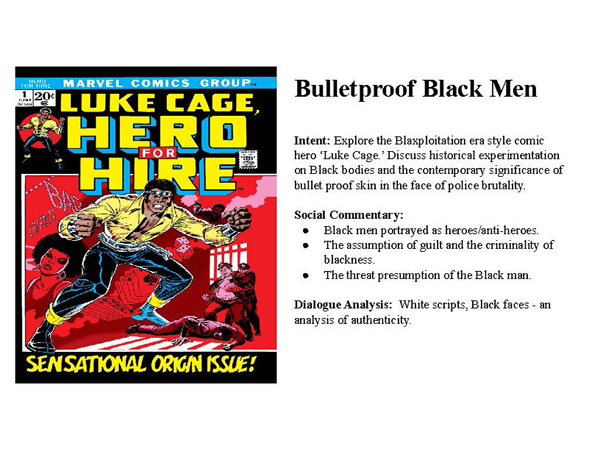
AFRAS 475 - Super Black: The Politics of Representation in Comics
Ajani Brown, Department of Africana Studies
“Super Black" is the exploration of comics focused on the increased prevalence of
black comic book characters and their creators. We will delve into the purposeful
and audacious inclusion of these culturally specific story arcs into the sequential
arts medium. This is an analytic history of the diverse contributions of Black artists
to the medium, covering comic books, superhero comics, graphic novels, and cartoon
strips.
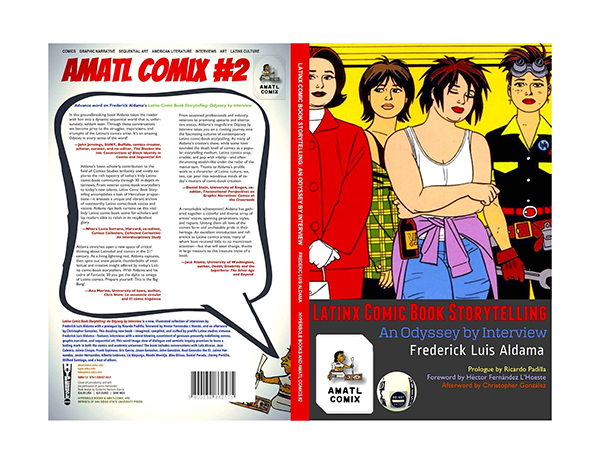
ECL 568 - Chicanx Comix: Community, Storytelling, and Social Justice
William A. Nericcio, English and Comparative Literature
When it comes to the history of comics, comic books, editorial cartooning, and animation
in the United States in the 20th and 21st century, the chapter dedicated to works
by Americans of Mexican descent (Chicanos/as/x) would be enormous. Examining pathbreaking
works, “Chicanx Comix” treats advanced undergraduates and/or graduate students to
broad array of styles, genres, media and more.
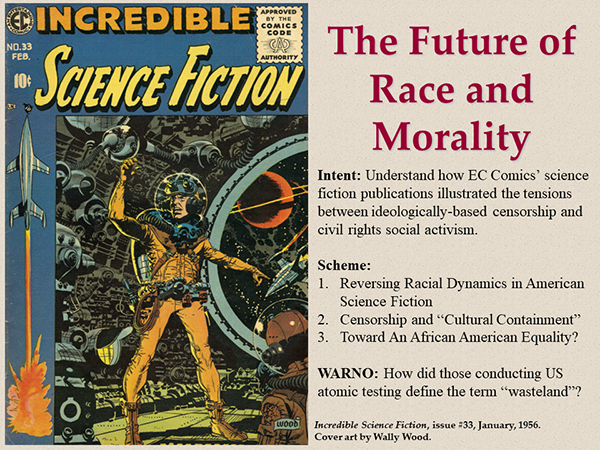
HIST 538 - Comics in Cold War America
Gregory A. Daddis, History
“Comics and Cold War America” examines the Cold War as a political, ideological, cultural,
and military contest through the medium of the “comic” as it evolved throughout the
post-World War II era. By examining Cold War comics, students will have the opportunity
to evaluate how these visual arts depicted race, identity, gender, and social justice
during a time when many U.S. citizens believed they were engaged in an existential
struggle between good and evil.
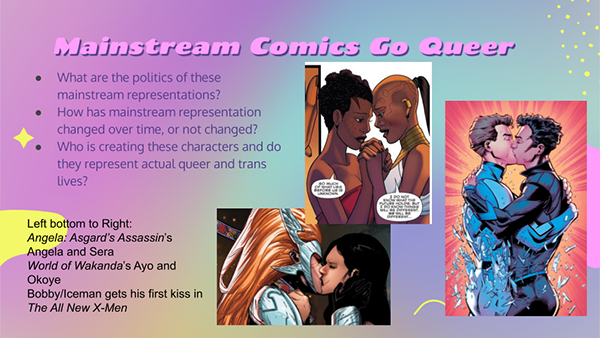
LGBT 550 - Queering Comics
Jess Whatcott, Women's Studies/LGBTQ+ Studies
“Queering Comics” is an exploration of LGBTQ+ culture, ideas, aesthetics, relationships,
identity, and politics through the prism of sequential art. We will use the medium
of comics to explore the politics of representation, assessing both the consequences
of the absence of complex queer and trans characters, and conversely the stereotypes
that are reproduced when queer and trans people do appear.
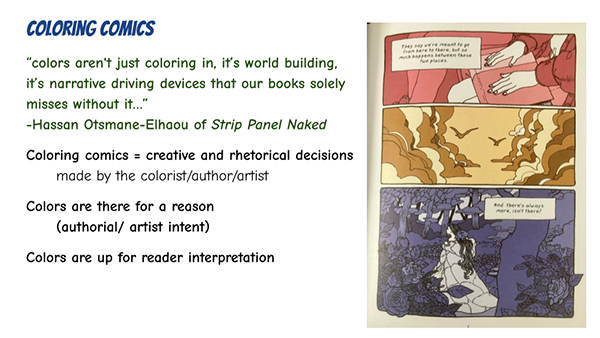
RWS 413 - The Rhetoric of Comics
Ben Jenkins, Rhetoric and Writing Studies
“The Rhetoric of Comics” offers an analytical look at the multimodal characteristics
of comics, focusing on how visual rhetoric and sequential narrative are crafted within
the genre to persuade and to convey meaning and messages to specific audiences. Students
will identify, analyze, and evaluate the various modes of communication that comics
creators utilize in telling their stories.
Year Two (AY 2023-24)
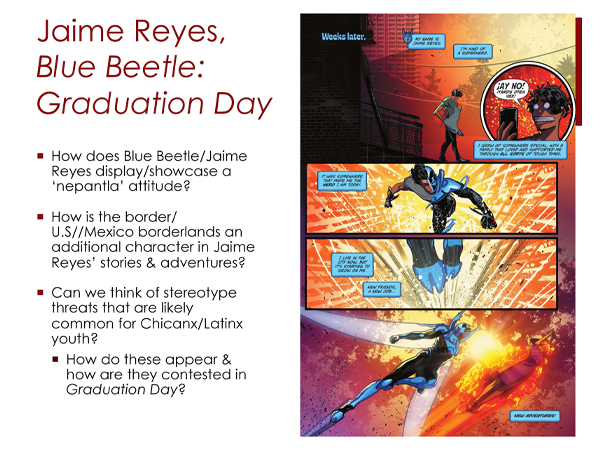
CCS 235 - Comics and Race
Michael Domínguez, Chicana and Chicano Studies
“Comics and Race” examines the representations of race, ethnicity, culture, and racialization
in comics and comic media. Specifically, we will give comics their due respect, positioning
them as literature and meaningful cultural contributors, and undertaking literary
and social analysis of these texts as racial narratives intersecting with historical
and contemporary sociopolitical tensions in our contemporary lives.
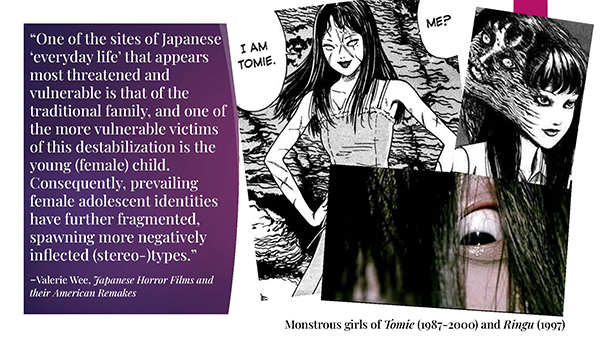
HIST 459 - Manga and Japanese History
Raechel Dumas, History
“Manga and Japanese History” maps the cultural history of modern Japan through representative
works of manga (Japanese comics) and selected anime adaptations. Students will analyze
manga as primary sources that reflect the array of historical developments, cultural
transformations, and socio-political discourses that have played into the construction
of “Japan” from the early modern period through the new millennium.
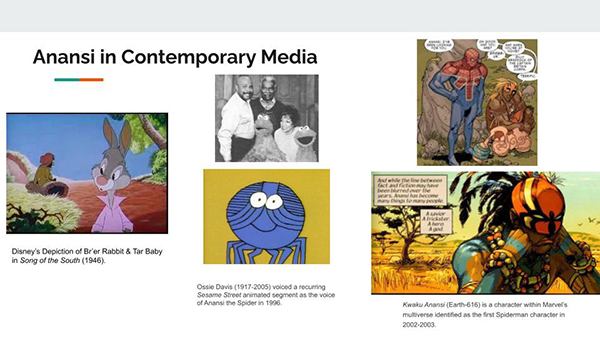
HUM 250 - Avenging the Universe:
An Introduction to Environmental Humanities & Comics
Kishauna Soljour, Humanities
“Avenging the Universe: An Introduction to Environmental Humanities & Comics” explores
the relationship between humanity, nature, and visual storytelling. Engaging the
full spectrum of visual medium, the course analyzes comics, graphic novels, cartoon
strips, animation 3-D imaging and film. Utilizing different styles of written and
visual communication, we will develop new ideas about environmental solutions and
create stories that envision possible futures grounded in equity, justice and a duty
to protect our dying world.
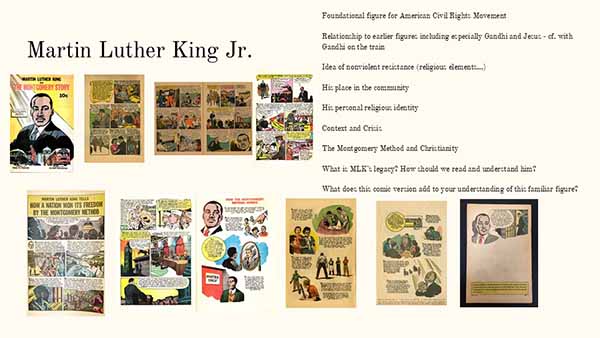
RELS 365 - Religion and Comics
Brad Kirkegaard, Study of Religion
"Religion and Comics" explores the intersection between Comics and Religion in its
many facets. Religion has long recognized the power of artistic expression. Sequential
art in particular has a long and rich history in many religious traditions. As a medium,
Comics offer fascinating new possibilities and challenges for religious expression
and storytelling. This course will provide an opportunity for students to explore
central topics of concern within diverse religious traditions and to think critically
about how we make sense of the world around us.
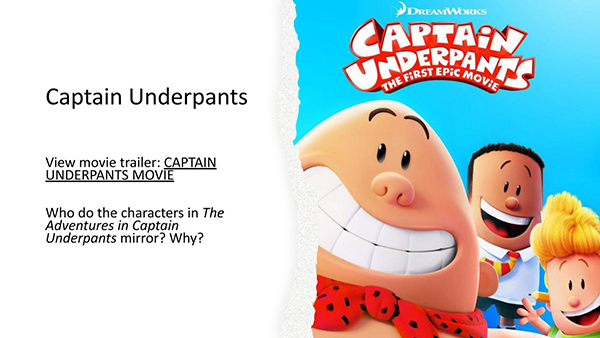
TE 579 - Comics for K-12 Educators
Katie Sciurba, Literacy Education
“Comics for K-12 Educators” is a course designed to (re)introduce students –who are
also future/current elementary, middle, or high school teachers – to the socio-political
importance and the literacy-enhancing value of comic strips, comic books, and graphic
novels. As we situate comics and graphic novels within discussions of censorship and
justice, students in this course will also develop ideas for educational practices
that challenge notions of difference that advantage some groups over others.